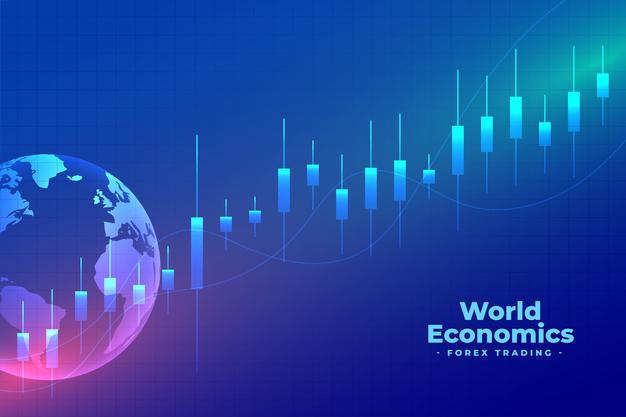
Category: Financial Markets








our fair value estimate to $49 per share. Oneok’s second quarter clearly shows the firm benefiting from a recovery in volumes across its footprint after the COVID-19- driven decline last year as well as numerous new assets placed in service.
Given the strong results, Oneok boosted its 2021 EBITDA guidance to above its earlier midpoint of $3.2 billion, and toward our current forecast of $3.3 billion. Second-quarter EBITDA was $802 million, a 50% increase from last year’s levels. The largest contributor to its earnings improvement is a recovery in Rockies volumes, as well as higher realized commodity pricing on its gathering contracts with a percentage of proceeds component. Rockies volumes across its footprint have recovered over 85% since the second quarter of 2020 to nearly 300,000 barrels per day, or bpd, and Oneok still has 440,000 bpd of capacity, expandable to 540,000 bpd with minimal capital spending.
Every 25,000 bpd of Rockies volumes is worth another $100 million in Oneok EBITDA. Oneok remains well positioned to capture new opportunities in the Williston basin. The gas/oil ratio has improved 80% over the last year in the Williston basin, leading to a substantial recovery in gas production. Oneok’s second-quarter gas processing volumes were about 1.25 billion cubic feet per day, and the firm expects to connect more than 300 wells to its footprint this year.
The increased connections point to incremental upside of about 150 million cubic feet per day of processing volumes. Reducing flaring to zero across Oneok’s footprint adds another 100 million cubic feet per day. Beyond that, simply holding the current oil rig count flat in the Williston basin suggests another 1 billion cubic feet per day of upside in overall gas volumes over the next decade per Oneok estimates.
Company Profile
ONEOK, Inc. is an energy midstream service provider in the United States. The Company owns and operates natural gas liquids (NGL) systems, and is engaged in the gathering, processing, storage and transportation of natural gas. THe Company’s operations include a 38,000-mile integrated network of NGL and natural gas pipelines, processing plants, fractionators and storage facilities in the Mid-Continent, Williston, Permian and Rocky Mountain regions. The Company operates through three business segments. The Natural Gas Gathering and Processing segment provides midstream services to contracted producers in North Dakota, Montana, Wyoming, Kansas and Oklahoma.
(Source: Morningstar)
General Advice Warning
Any advice/ information provided is general in nature only and does not take into account the personal financial situation, objectives or needs of any particular person.

Adjusted EPS in the recently ended quarter were $0.53 versus $0.60 in the same period last year. Earnings in the second quarter were negatively impacted by several heat waves in June. Con Ed mobilizes crews in anticipation of weather events, resulting in significant extra costs even when the weather events end up not being as serious as anticipated.
Our 2021 adjusted EPS estimate of $4.25 is unchanged and at the midpoint of management’s $4.15-$4.35 EPS guidance range. Management increased its 2023 rate base guidance by $135 million due to the approval of a new transmission line. The increase in projected rate base would result in about a $0.01 increase in our 2023 EPS estimate but would not have a material impact on our fair value estimate.
Con Ed’s regulatory allowed returns are lower than industry average, but the overall regulatory rate structures in New York remain constructive. Multi-year rate cases provide forward-looking estimates of capital expenditures and rate base, swallowing Consolidated Edison Company of New York, Con Ed’s largest subsidiary, to consistently earn near or above its 8.8% allowed return on equity.
Company Profile
Con Ed is a holding company for Consolidated Edison Company of New York, or CECONY, and Orange & Rockland, or O&R. These utilities provide steam, natural gas, and electricity to customers in southeastern New York–including New York City–and small parts of New Jersey. The two utilities generate roughly 90% of Con Ed’s earnings. The other 10% of earnings comes from investments in renewable energy projects and gas and electric transmission. These investments have resulted in Con Ed becoming the second-largest owner of utility-scale PV solar capacity in the U.S.
(Source: Morningstar)
General Advice Warning
Any advice/ information provided is general in nature only and does not take into account the personal financial situation, objectives or needs of any particular person.

The company’s reputation, regulatory compliance, and track record as a custodian have allowed it to maintain transaction fees above many of its peers despite operating in a crowded field with hundreds of competing firms trying to grab market share in the rapidly growing space. Coinbase has continued to branch off into adjacent businesses offering cryptocurrency collateralized loans, a crypto debit card, blockchain infrastructure support, and data analytics services.
While these new businesses expand the company’s presence in the cryptocurrency space and add new revenue streams, the company still earns the majority of its income through the transaction fees traders pay when they trade on Coinbase’s platform. These fees are charged as a percentage of trade’s total value. Due to its breadth of its service offerings and the connection between cryptocurrency prices and trading revenue, Coinbase’s short- and long-term results are deeply tied to the health and growth of cryptocurrencies as an asset class.
Cryptocurrency adoption continues to rise but questions regarding the long-term viability of cryptocurrency, the role of speculation in current market prices, and the potential for a more hostile regulatory environment remain unanswered.
Financial Strength
Coinbase is in an excellent financial position, particularly after receiving an influx of capital from private-investment- in-public-equity investors coinciding with its direct listing on the Nasdaq exchange. Coinbase saw a spike in trading volume in the first quarter of 2021, leading the company to generate more net income in the first quarter of the year than in the entirety of 2020. As a result, the company ended March 2021 with nearly $2 billion in cash against only $500 million in borrowed crypto assets. Since March, Coinbase has issued $1.25 in convertible debt due in 2026, adding to both its liquidity reserves and its debt load. The decision to keep Coinbase largely free of debt makes sense given how volatile the company’s revenue generation can be. Coinbase needs to keep sufficient financial reserves to sustain itself in the event of a major market collapse.
No-moat Coinbase reported strong second-quarter results with earnings of $6.42 per share and net revenue of $2.23 billion coming in above our expectations. Earnings benefited from a tax benefit of $737 million as a result of tax deductions associated with the company’s direct listing. Strong cryptocurrency prices during the quarter drove total trading volume to a new all-time high of $462 billion, 38% more than last quarter. Coinbase added 29 new cryptocurrencies to be traded on its platform and now lists 83 different offerings. Coinbase continues to increase spending with operating expenses increasing 66% from last quarter and 838% year over year. As a result of the sharp sequential increase in operating expenses the company’s operating margin fell from roughly 55% in the first quarter to 39% in the current quarter.
The two largest drivers of this decline were technology and development spending, which increased 58%, sequentially and marketing spending, which increased 66%. Historically, Coinbase has kept marketing spending at 10% or less of sales, as it relied more heavily on word of mouth than on advertising to grow. The company is now guiding marketing expenses to be around 12%-15% of sales during 2021. Average retail trading fees increased from 1.21% in the first quarter to 1.26% in the second quarter, due to a mix shift away from the company’s less expensive Coinbase Pro platform.
Bulls Say’s
- Coinbase has established itself as the leading U.S.cryptocurrency exchange and established a strong reputation for security in an industry filled with risk for traders.
- Coinbase has been able to accelerate the rate at which it lists new cryptocurrencies, giving the company more exposure to the growth of the asset class.
- There is a global market for cryptocurrency. Regulatory approval from international regulators will allow Coinbase to expand its operations and increase its footprint globally.
Company Profile
Founded in 2012, Coinbase is the leading cryptocurrency exchange platform in the United States. The company intends to be the safe and regulation-compliant point of entry for retail investors and institutions into the cryptocurrency economy. Users can establish an account directly with the firm, instead of using an intermediary, and many choose to allow Coinbase to act as a custodian for their cryptocurrency, giving the company breadth beyond that of a traditional financial exchange. While the company still generates the majority of its revenue from transaction fees charged to its retail customers, Coinbase uses internal investment and acquisitions to expand into adjacent businesses, such as prime brokerage, data analytics, and collateralized lending.
(Source: Morningstar)
General Advice Warning
Any advice/ information provided is general in nature only and does not take into account the personal financial situation, objectives or needs of any particular person.